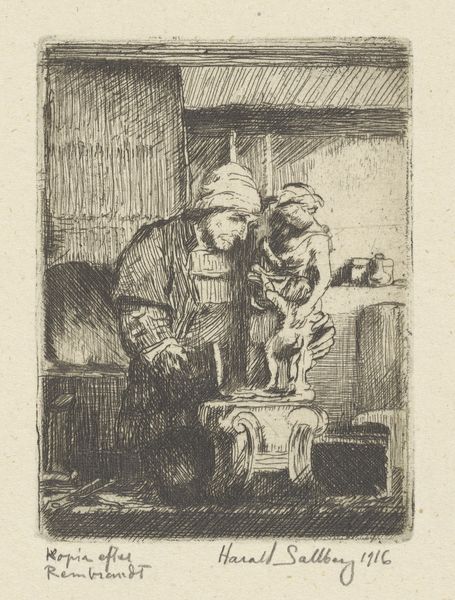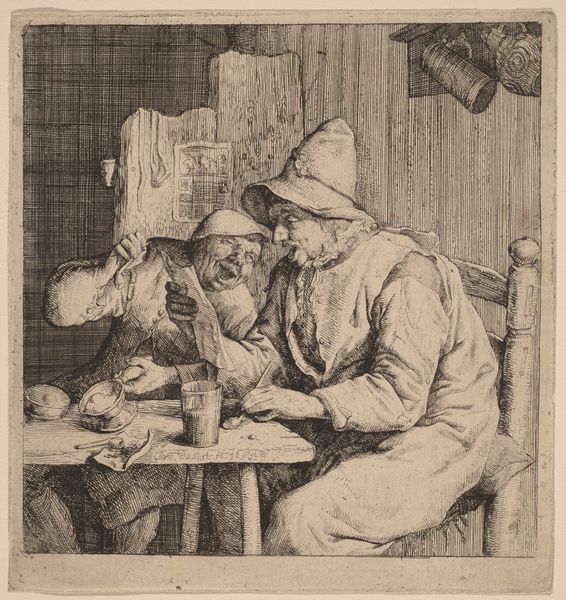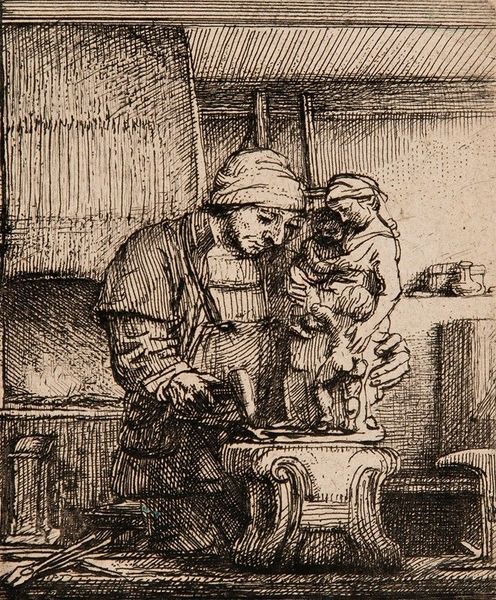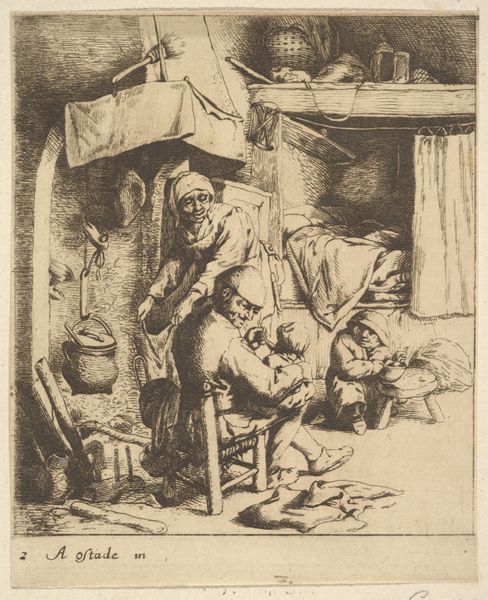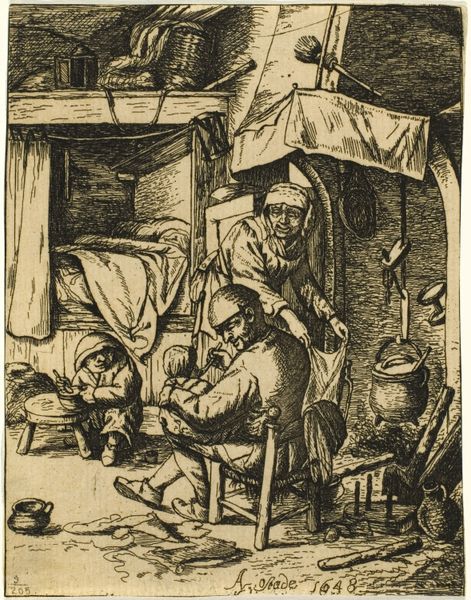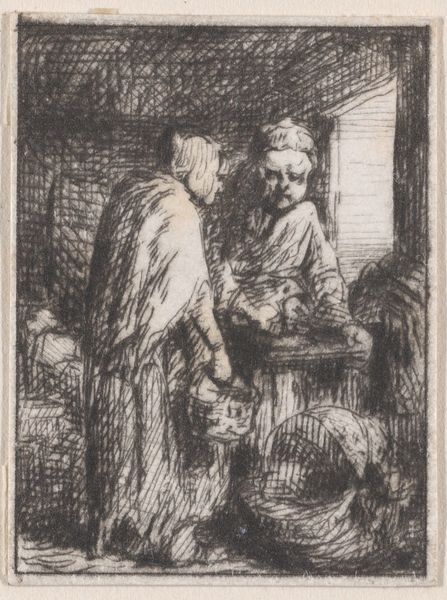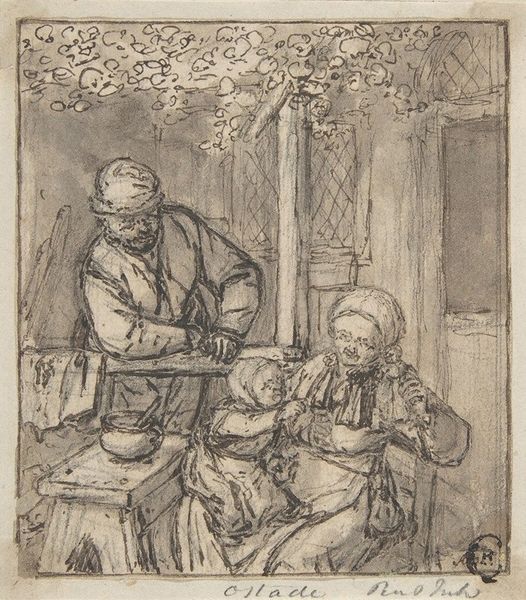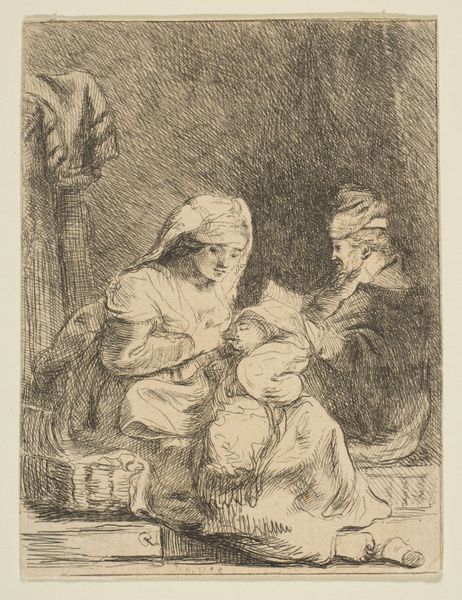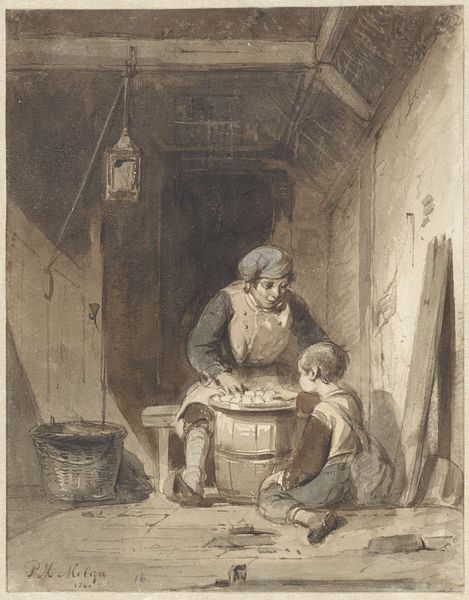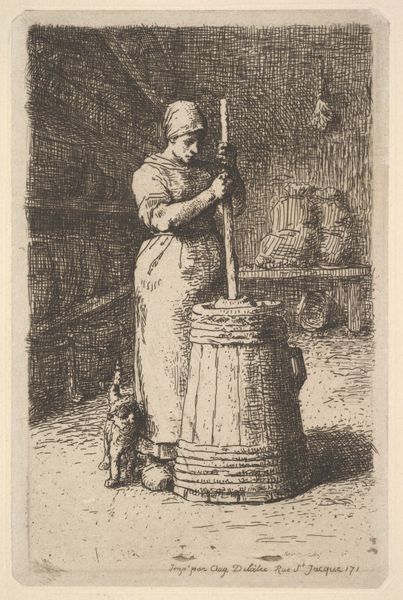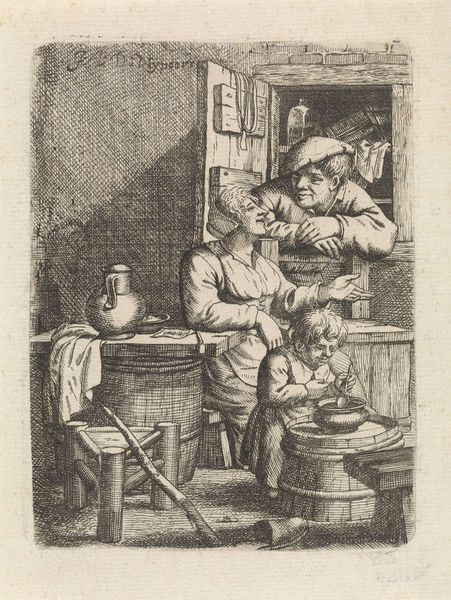
print, etching
#
portrait
#
baroque
# print
#
etching
#
genre-painting
#
realism
Dimensions: 3 1/16 x 2 1/4 in. (7.7 x 5.7 cm) (plate)
Copyright: Public Domain
Rembrandt van Rijn's etching, "The Goldsmith," presents us with an intimate scene rendered through a dense network of lines. The composition is dominated by the figure of a craftsman meticulously working on a sculpture. Light and shadow play across the scene, creating a sense of depth and texture within the confined space. Rembrandt uses the etching technique to explore themes of labor, artistry, and familial connection. The Goldsmith is hunched over his work, his concentration palpable, while a woman and child stand nearby, perhaps symbols of the fruits of his labor, or simply offering comfort. The lines create an intimate and warm scene, emphasized by the material reality of the etching itself, a copper plate worked with acid and ink. This work invites us to consider the value we place on craftsmanship and the human relationships that sustain artistic creation. The Goldsmith offers not a static representation but a dynamic interplay of lines, textures, and emotional resonance, reminding us of art's capacity to evoke empathy and contemplation.
Comments
minneapolisinstituteofart almost 2 years ago
⋮
Research shows that no metalsmith in Rembrandt's day would have made a gold statue as large as the one depicted here, but that is not the point of this private little print. The image cradled so lovingly by the smith is Charity, personified by a mother protectively embracing her children. Rembrandt's audience would have responded immediately to this symbol; the Dutch provided more charitable relief in the seventeenth century than any other European country.
Join the conversation
Join millions of artists and users on Artera today and experience the ultimate creative platform.
